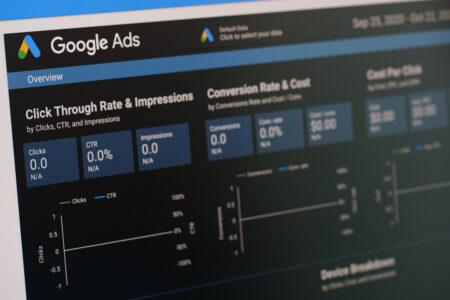As a young (after all, 30 is the new 20!), single, millennial, Account Manager living in the modern age, it’s probably not a surprise that I’ve experienced my fair share of online dating – with varying degrees of success.
I sat down intending to write a blog about my experiences within the digital marketing space, and what recommendations I could make when looking at your annual strategy. But when I found myself struggling with a blank Word document in front of me, I treated myself to a five-minute break for ‘Hinge-ing’ (Other dating apps are available). Surprisingly, it inspired me to write this blog!
It’s been 6 years since we shared this blog: How B2B Lead Nurturing Is Like Dating – 2017 Tinder and Statistics Edition, so it’s about time that we relook at the subject, this time comparing online dating to the marketing lifecycle.
The marketing lifecycle vs dating lifecycle
The marketing lifecycle is made up of four stages, and in my opinion, these can easily be linked to the stages of online dating:
Attract – getting the perfect profile picture
There are 23 million users on Hinge worldwide, so you must be presenting yourself in the best possible way to get those all-important matches. This means including pictures that appeal to all the different audiences.
You might include a picture of you paddle boarding or walking your dog, this will help give potential matches indicators of whether you’re the kind of date they’re after.
In the same way, the attract or ‘awareness’ stage of the marketing lifecycle is about making sure you’re getting your brand in front of people who could be potential customers. This could be done in several different ways, like using display advertising to target a specific group of people. This is a great way to show off your product or service, in the same way a good profile picture does.
Engage – having good chat
Once you’ve swiped left and right a few times, you’ll hopefully end up matching with someone who matches your vibe. Now it’s time to focus on getting to know them and trying to find out if there is a future on the cards, and the only way to do this is by talking to them and asking questions.
This process is similar to the engagement stage of the marketing lifecycle. This is where you show off your brand to potential customers encouraging them to convert.
During this stage, you’re giving the person enough information about your product or service to help to make a decision on whether it’s right for them. This can be done in many ways, from email marketing and webinars to forms of content marketing like blogs and infographics – the possibilities are endless!
Convert – sealing the deal (with a date!)
The conversations have been flowing, so now it’s time to lock in a date, you’ve got to pull out all the stops and get your best outfit ready for some face-to-face time.
To me, getting that first date booked in is a sign of success in the dating game, so in marketing terms, you could see it as ‘converting’ the person you’ve been speaking to.
Converting users into customers is a key milestone in the marketing world, and what a lot of KPIs are based on. But to understand where and how this conversion happens, having the right tracking in place is vital. Unfortunately, there’s no fun dating analogy to convey the importance of tracking, but trust me, it’s crucial.
Retain – going the distance
The fourth stage is the crucial one – it can make or break the relationship. You’ve already admitted that you like each other, but you need to keep the spark alive and maintain your interest. This is where those special butterfly-feeling moments, like surprising you with a special date night or a bunch of flowers, can make all the difference.
In marketing, this stage is just as crucial. Once you’ve managed to convert a user, the goal is to keep them engaged and coming back for more. To achieve this, your marketing plans need to ensure this time in a customer’s lifecycle is considered. This can include sending ongoing email newsletters, creating engaging social media content, and retargeting with associated products or services.
Keep the spark alive
By understanding each stage of the customer journey and implementing tailored strategies at each stage, lifecycle marketing can help businesses create stronger, longer-lasting relationships with their customers and increase customer retention and lifetime value.
When you consider the lifecycle of a user, you need to create a marketing strategy that focuses on engaging customers at every stage of their relationship with a brand, from initial awareness to post-purchase loyalty. The goal is to build long-term relationships with customers by providing relevant, personalised experiences that meet their needs and interests.
Ready to write your digital marketing love story? Speak to our experts today to see how we can revamp your digital marketing strategy to help you reignite the spark with your customers and target audience.
Let's collaborate
Partner with us
Let’s work together to create smarter, more effective solutions for your business.
Related blogs
Who we are
Explore how our culture and expertise fuel digital innovation
Join us








